Today I am delighted to present the recipe for Sojjappalu, a traditional recipe from Andhra Pradesh, as a guest post for Sapana Behl of Cooking with Sapana. A couple of months ago, Sapana did this wonderful guest post on Baklava Rolls for my blog. It is now my turn to do a guest post for her, though it is delayed. I hope this wonderful Halwa Stuffed Puri from Andhra Pradesh makes up for the delay. 🙂
I have seen Sapana grow a blogger over the past 2 years. Her culinary repertoire has expanded to cover multiple cuisines. She is also blossoming into a wonderful food photographer. I am quite inspired by her.
You can view Sapana’s work at:
- Cooking With Sapana
You can also follow her on FacebookTwitter Pinterest and Instagram.
There are many reasons that I chose Sojjappalu (aka Suji Halwa, Sheera or Rava Kesari Stuffed Puris) for Sapana.
- Halwa Puri is one of my favourite combinations
- It will be Ugadi soon and this would a great way to user in the New Year
- Sojjappalu are a great hit with children and I hope Sapana’s daughter will love this as well.
- Most importantly, I am not given to deep frying, so this guest post is also an indulgence for me 🙂
Sojjappalu needs a load of patience and a decent amount of time to make. The result, though, is absolutely worth the effort. Also known as Sajjappa in Karnataka, this dessert can be stored for 2-3 days. That is, if they last that long. 🙂
I urge you to visit Sapana’s wonderful blog for the recipe for Sojjappalu aka Sajjappa and other delicious recipes.
How to Make Sojjappalu or Sajjappa
Ingredients for the Sojjappalu Dough
- Maida – 1 Cup
- Rice Flour – 1 tsp
- Salt – 2 Healthy Pinches
- Water – To Knead the Dough
- Oil – 1 tbsp
Ingredients for Rava Kesari
- Rava, Suji or Semolina – 1/3 Cup
- Sugar – 1/3 Cup
- Ghee – 2 tbsp
- Cardamom Powder – ¼ tsp
- Water – 2/3 Cups
- Yellow or Orange Food Colour – 4 to 6 drops
Other Ingredients
Oil for Deep Frying
Method to Make Sojjappalu or Sajjappa Dough
- Sieve together the rice flour, maida, and salt.
- Make a well in the middle of the flour.
- Add about ¼ cup water.
- Knead into a pliable dough. Add more water a little at a time, as and when required.
- Roll the dough into a ball.
- Pour 1 tbsp oil onto the surface of the dough.
- Knead a bit so that the dough absorbs some of the oil but remains oily on the surface.
- Close and set aside for 10 minutes.
Method to Make the Rava Kesari
- In a pan, heat the ghee.
- Add the rava and sauté for about 5 minutes. The rava should not change colour.
- When the rava gives off a gentle aroma, add the sugar ad cardamom powder.
- Mix well.
- Now add the water and food colour and mix well.
- Over medium flame, cook till the water is absorbed and the Rava Kesari is slightly translucent.
- Turn off the heat and let the Kesari cool to room temperature.
- Using a spoon or a fork, mix the Rava Kesari well so that it becomes a bit crumbly.
Method to Make Sojjappalu or Sajjappa
- Heat the oil.
- In a large kadai or wok, over medium flame, heat enough oil to fry the Sojjappalu. You should have oil to about 3” inches depth.
- Let the oil remain on medium flame while you shape the puri.
- Divide the Kesari into 8 equal portions.
- Roll into balls.
- Cover and set aside.
- Pinch about a small marble sized piece of dough and set aside. We use this to test the temperature of the oil.
- Using a well-oiled hand, divide the dough into 8 equal sized balls. The oily hands will prevent the dough balls from drying out.
- Roll into balls.

- Cover and set aside.
- Cover and set aside. Be sure to cover, because the dough with dry out rather quickly.
- Use a few drops of oil to grease a 6” plastic sheet.

- Place one ball of dough on the sheet.
- Using a well-oiled hand, press the dough into a 3.5” round puri. The puri should thick at the centre and thin at the edges.
- Place one ball of the Kesari at the centre of the puri.

- Fold the edges of the puri to cover the Kesari.
- Roll into a ball so that the edges are sealed. Ensure there are no breaks from where the Kesari can leak.

- Using a well-oiled hand, press this ball into a 5” puri. Ensure that the Kesari never breaks out of the dough cover.

- Test the heat of the oil.
- Pinch a small piece of dough from the marble-sized piece you set aside.
- Drop it into the oil.
- The ball should rise to the surface.
- If it does not, heat the oil some more.
- Repeat the test.
- Gently slide the Sojjappam into the hot oil.
- Fry till golden brown.

- Flip over and fry the other side.
- Using a slotted spoon, lift the Sojjappam out of the oil.
- Hold it over the wok for a minute or so to ensure the excess oil drips off.
- Place on a kitchen tissue.
- Repeat steps 11 to 24 to make the other Sojjappalu.
- Store in an air-tight container.
- Savour by themselves. If you are feeling decadent, dip pieces in slightly sweetened milk and then savour. 🙂

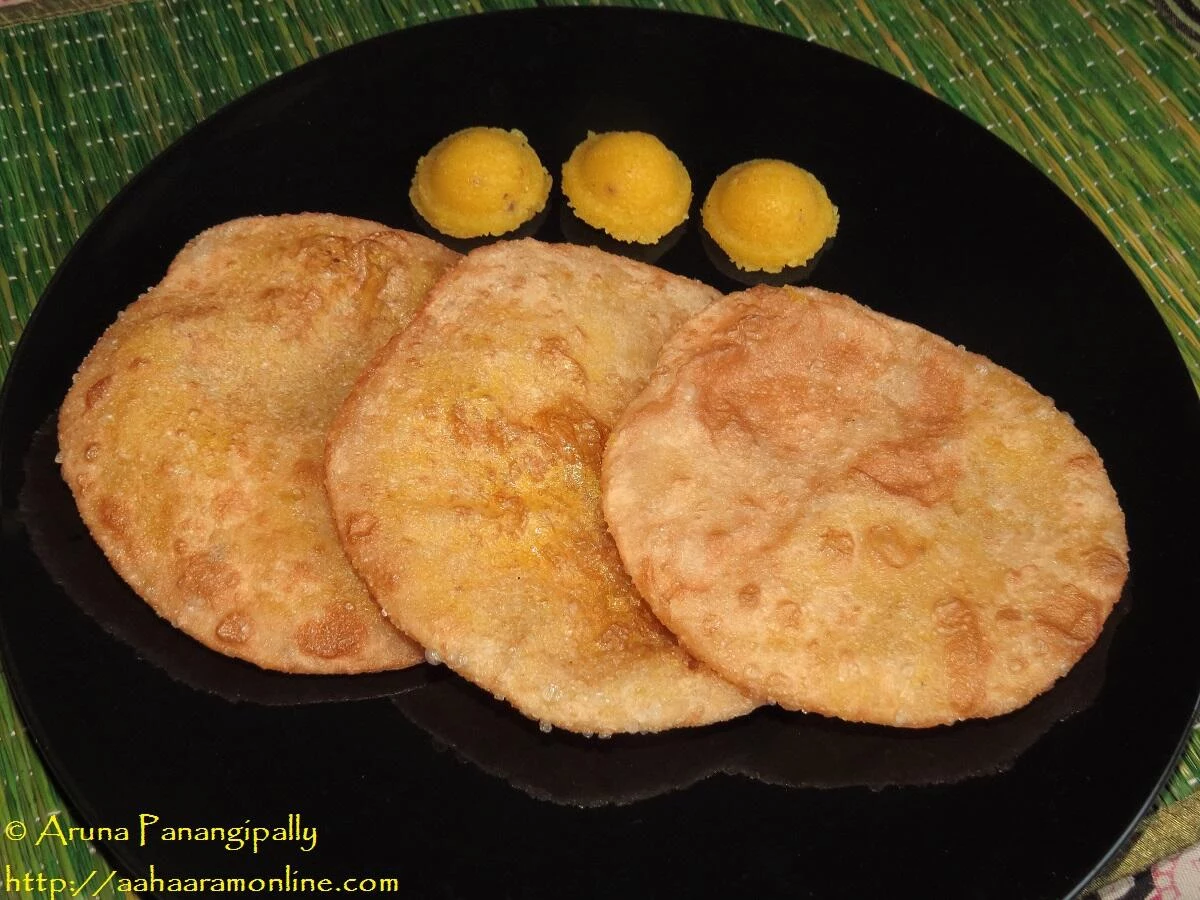
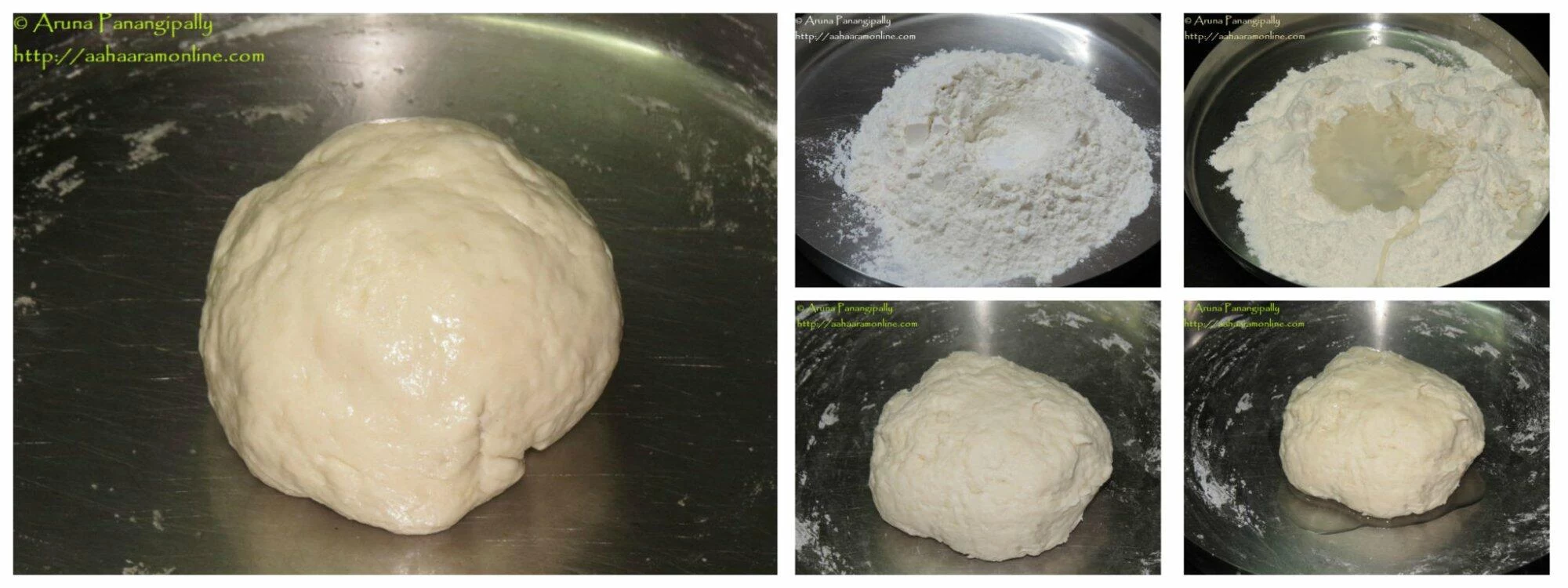
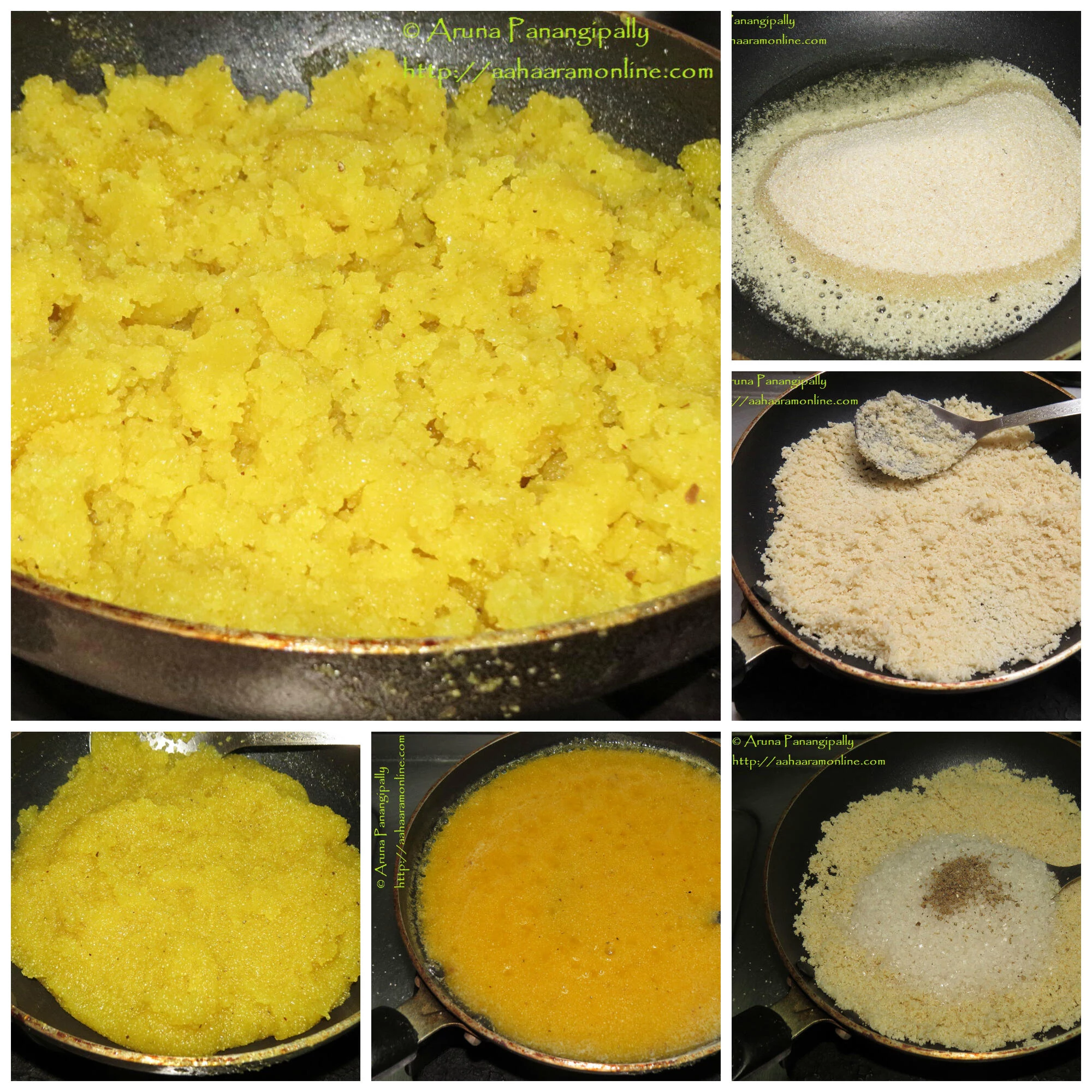
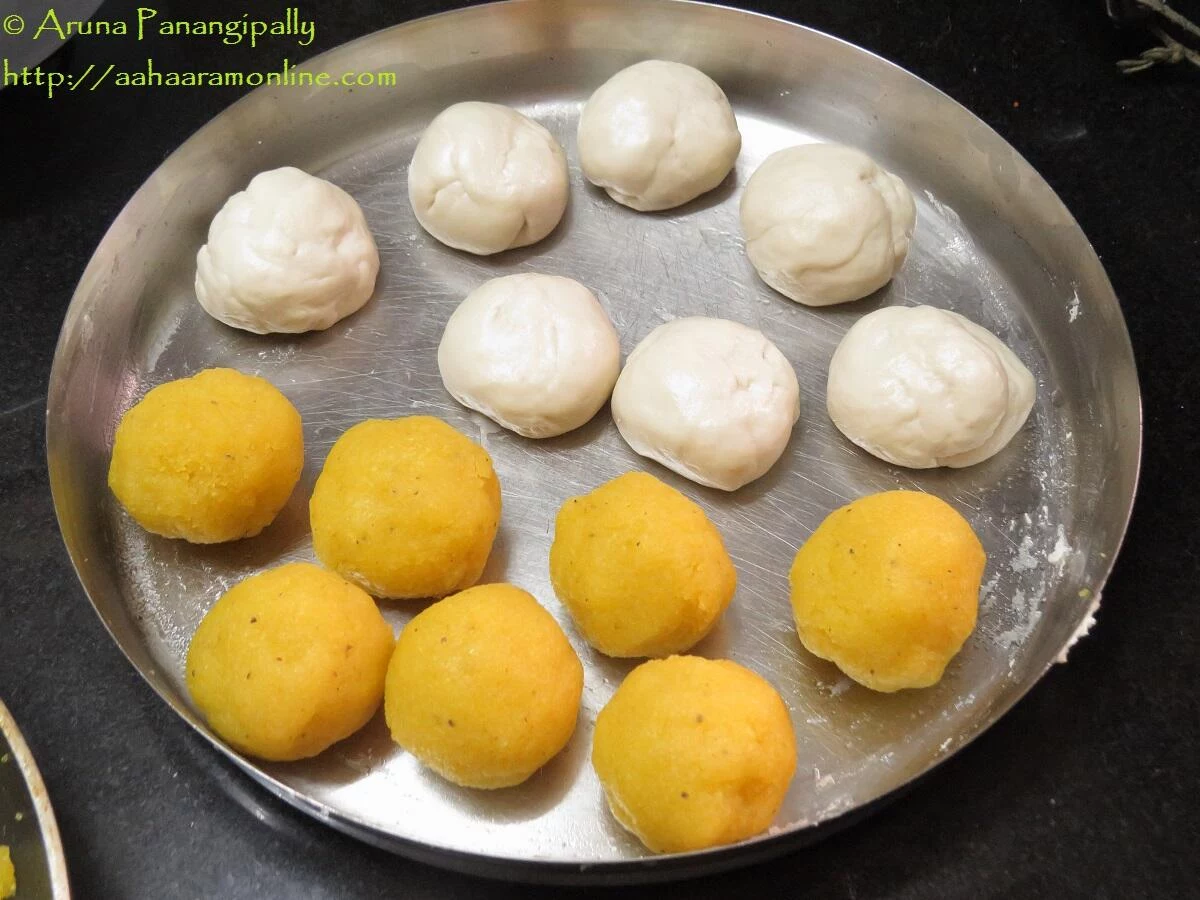
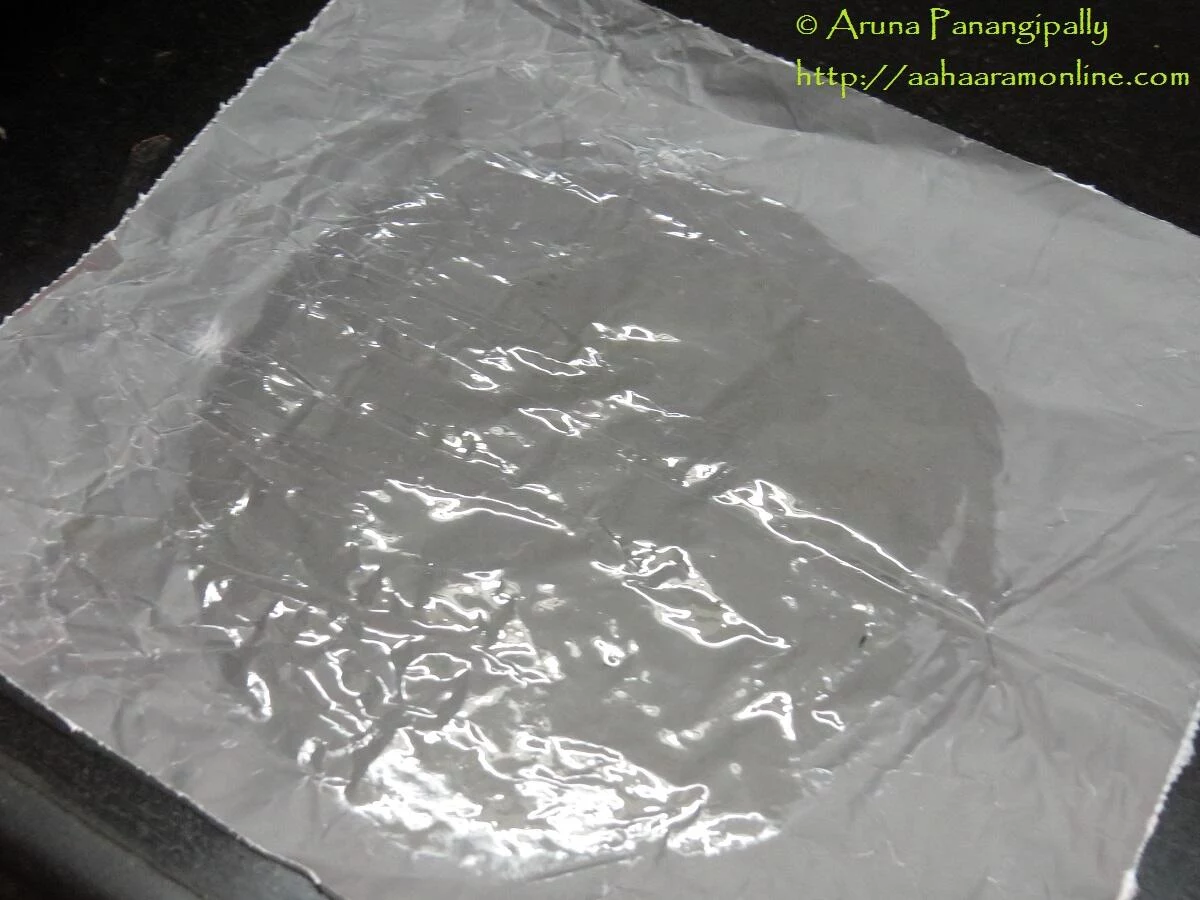
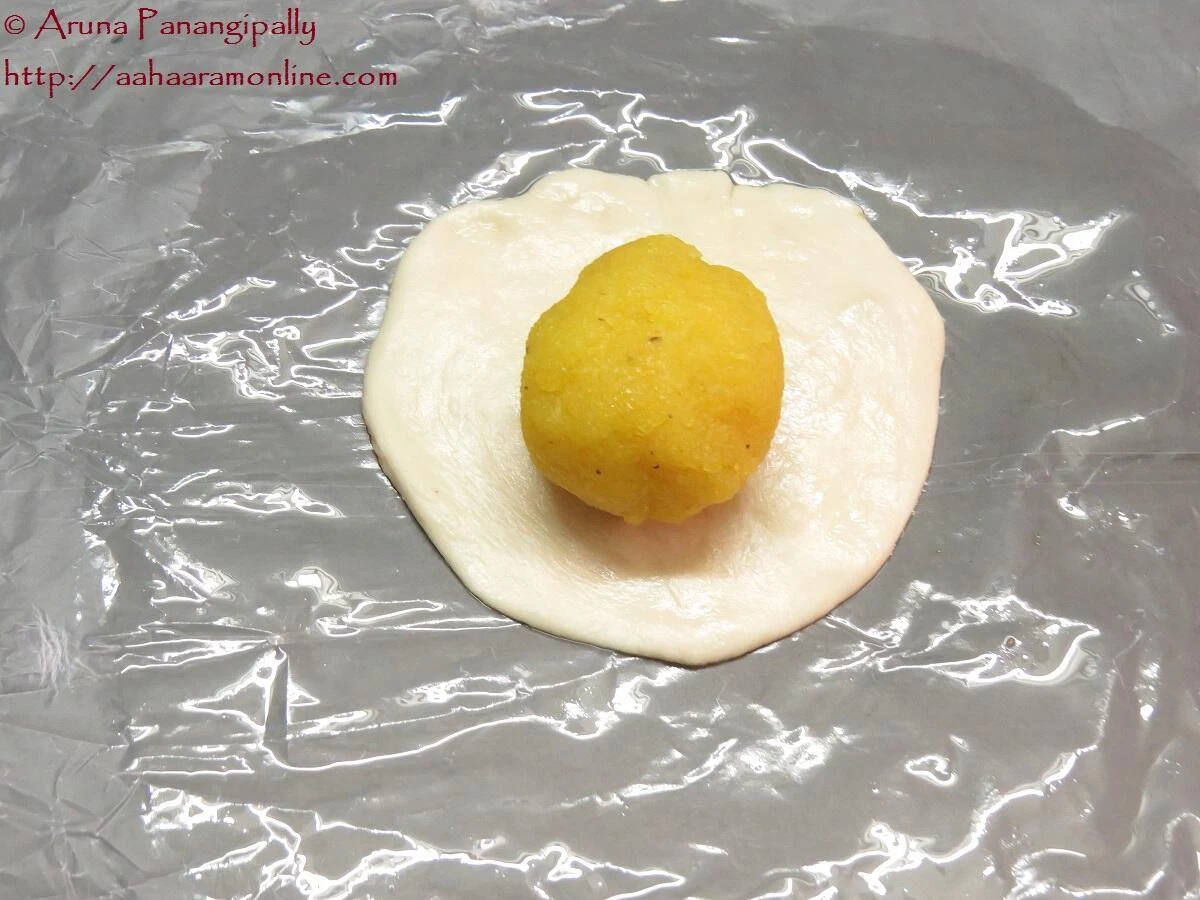
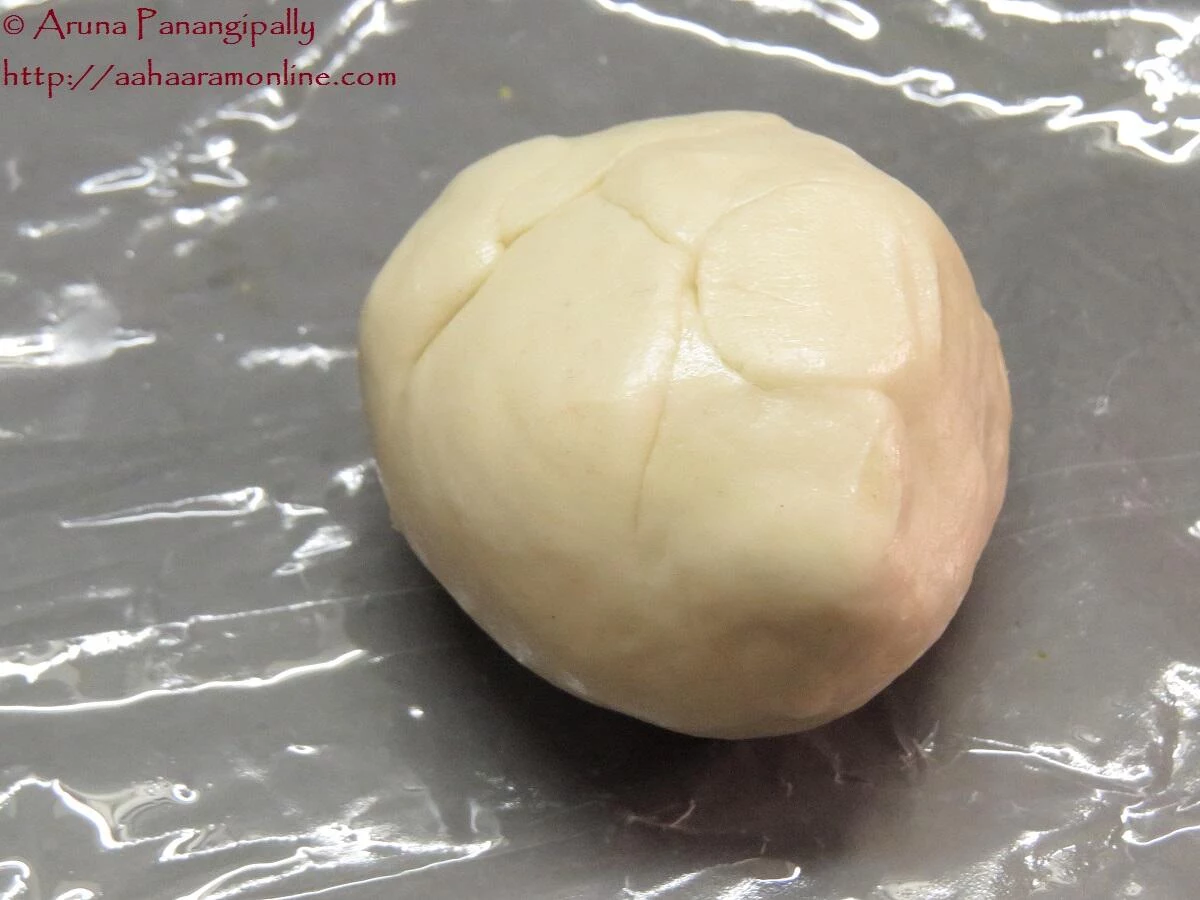
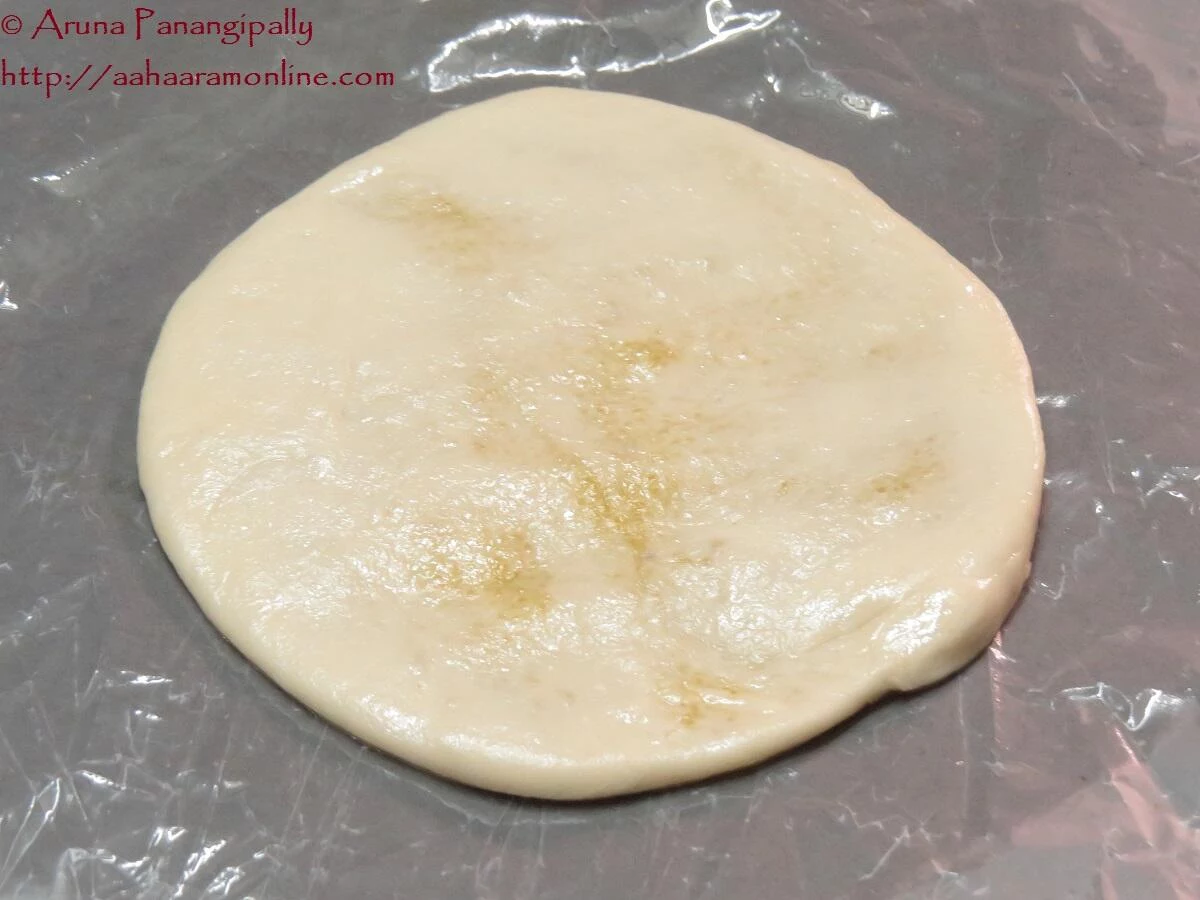
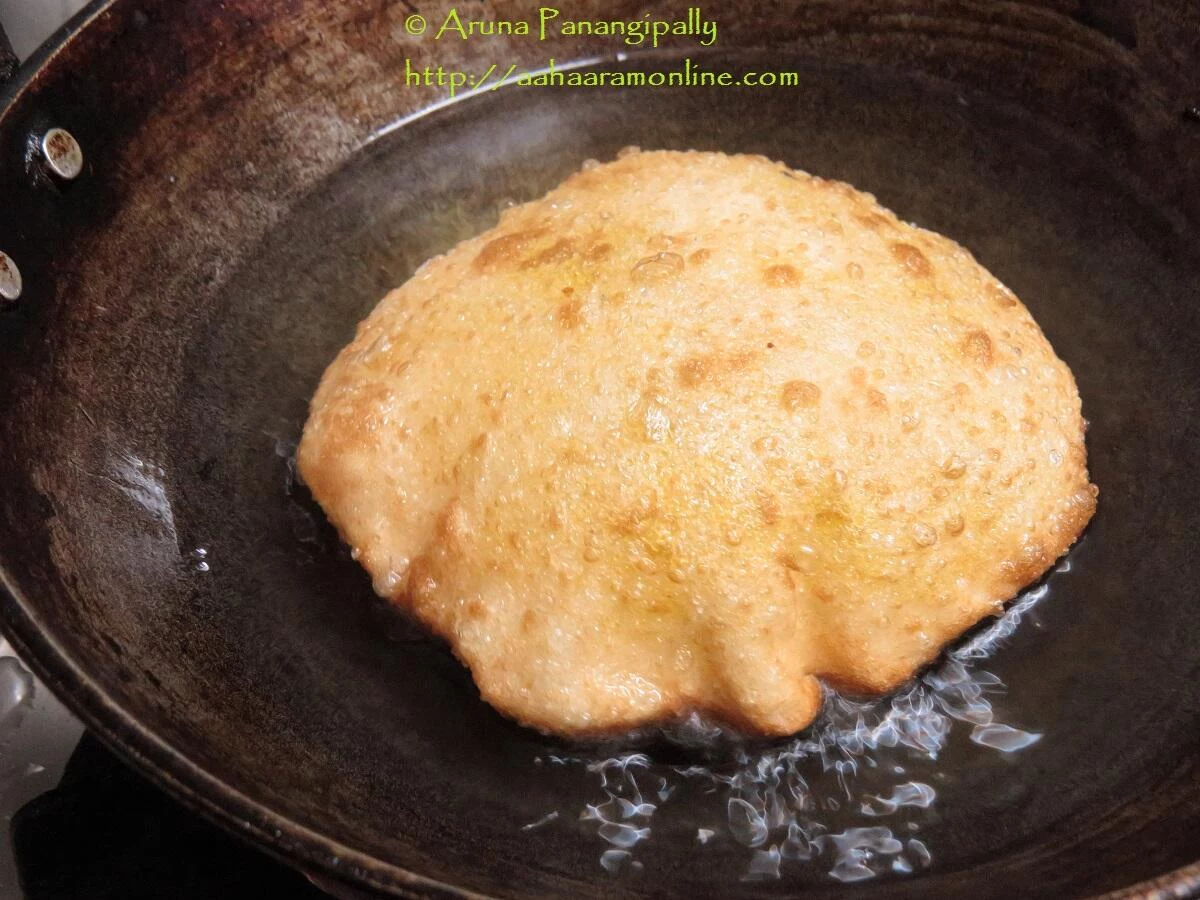

Yummy! totally love it 🙂
What a nifty idea, I’ve never had halwa in a puri before. It looks lovely!
love it!
Pori with Halwa stuffing sounds awesome..
Wow! Loved the idea of halwa stuffed poori! This is definitely unique to me and I am looking at it for the first time. Thanks for the share.
I hope you make it soon!
We do make rava kesari with puris, but stuffing puriswith rava kesari…..never heard before. must be awesome.
Very common in the south. 🙂
Such a yummy dish from one great blogger to another.
Thank you!
Wow.. these look super delicious.. halwa stuffed puris.
Thank you!
Loved the idea of stuffing the halwa inside the puri instead of serving them separately, awsome post.
Makes it easier to eat and twice the enjoyment. 🙂
Halwa stuffed puri sounds heavenly Aruna. I know halwa goes well with puri but never heard about halwa stuffed puri. Great share.
Thank you, Sujata
WoW Aruna this is really a superb share. Simple love this recipe we usually eat poori with halwa and your recipe is poori-halwa in one combo that’s sounds so delicious & yummy ?
Thank you, Jolly. It is indeed delicious.
Aruna, never heard of this sweet dish from Andhra Pradesh and Karnataka but it is something that I’d like to try. What is there not to like about puri and halwa put together.
I hope you try it soon. 🙂
This is usually made during festivals, its tasty. Lovely one.
Thank you!
Thank you.I am so delighted when I hear about this iconic sweet. We call it Sojji appam in Tamil. Quite an uncommon dish. My family made it only on Sraddham days. Though Sraddham was not for rejoicing, the very thought of Sojji appam would make me joyous. Not a very wholesome sweet, and the appam was always oozing oil, but still it was divine.
Hey! We only live once (ironic then that we should make this sweet on Shraddham days). Sometimes, we just need to indulge.
Definitely something to try? it’s so unique ?
Thanks!
I sincerely would love to bit into that! Totally love halwa puri so a combined doss of it sounds like a very intriguing and lipsmacking idea…
Thank you! Hope I tempted you enough to make this on a cheat day. 🙂
This recipe is so unique. I have heard of this Halwa puri in movies. But never tried at home. Superb share.
This is a case of real life inspiring movies. 🙂
Oh my god Aruna, I just made them yesterday!! These are my favourite…I also like to add some cashews!!…Delicious share!!
They are the best, na?
So tempting!! Now I’m craving for some halwa poori!
Thank you!
Wow! Yummy poori with Halwa. Next time I making this, thanks for the idea!
It is a very traditional Andhra recipe. Also, made in Karnataka and parts of Maharashtra. 🙂
We call them meetha pura here. My husband and I love these for Sunday brunch but I’ve never tried cooking them at home. Now that I have your lovely recipe, there is no excuse for not trying. ?
Absolutely… 😉 Look forward to your version soon. 🙂
Can I just say mmmmm and drool for a while as i am zt loss of words with the tons of memories of this rushing in…
Absolutely! Hope it spurs you to make some as well.
I loved this authentic recipe when you guest posted for me. Love the detailed explanation and step wise click dear and thank you for prompting my blog too. You are so kind.
I enjoyed doing it for you, Sapana!
Loved the idea of stuffing 🙂
Must be delicious, looks so yumm too aruna !!
Thank you!